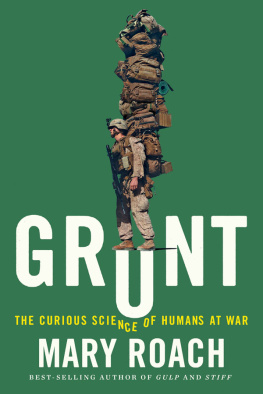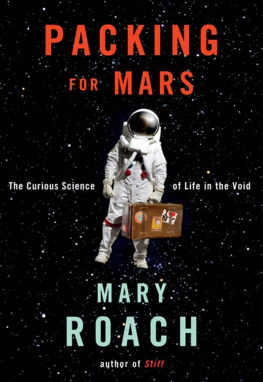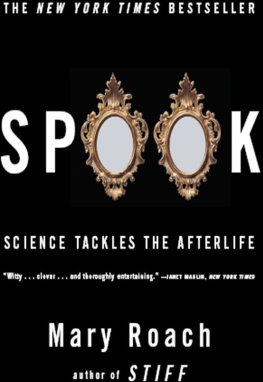Roach - Gulp
Here you can read online Roach - Gulp full text of the book (entire story) in english for free. Download pdf and epub, get meaning, cover and reviews about this ebook. year: 2013, publisher: Oneworld Publications, genre: Detective and thriller. Description of the work, (preface) as well as reviews are available. Best literature library LitArk.com created for fans of good reading and offers a wide selection of genres:
Romance novel
Science fiction
Adventure
Detective
Science
History
Home and family
Prose
Art
Politics
Computer
Non-fiction
Religion
Business
Children
Humor
Choose a favorite category and find really read worthwhile books. Enjoy immersion in the world of imagination, feel the emotions of the characters or learn something new for yourself, make an fascinating discovery.
- Book:Gulp
- Author:
- Publisher:Oneworld Publications
- Genre:
- Year:2013
- Rating:5 / 5
- Favourites:Add to favourites
- Your mark:
- 100
- 1
- 2
- 3
- 4
- 5
Gulp: summary, description and annotation
We offer to read an annotation, description, summary or preface (depends on what the author of the book "Gulp" wrote himself). If you haven't found the necessary information about the book — write in the comments, we will try to find it.
Roach: author's other books
Who wrote Gulp? Find out the surname, the name of the author of the book and a list of all author's works by series.
Gulp — read online for free the complete book (whole text) full work
Below is the text of the book, divided by pages. System saving the place of the last page read, allows you to conveniently read the book "Gulp" online for free, without having to search again every time where you left off. Put a bookmark, and you can go to the page where you finished reading at any time.
Font size:
Interval:
Bookmark:
Also by Mary Roach
Packing for Mars: The Curious Science of Life in Space
Bonk: The Curious Coupling of Sex and Science
Six Feet Over: Adventures in the Afterlife
Stiff: The Curious Lives of Human Cadavers

A ONEWORLD BOOK
Published in Great Britain and the Commonwealth by Oneworld Publications 2013
This eBook edition published in 2013
First published in the United States by W.W. Norton & Company Inc.
Copyright 2013 by Mary Roach
The moral right of Mary Roach to be identified as the author of this work has been asserted by her in accordance with the Copyright, Designs and Patents Act 1988
All rights reserved
Copyright under Berne Convention
A CIP record for this title is available from the British Library
Quotes from interviews have been altered for spelling in order to provide for a better reading experience. Quotes from written sources have been presented without change.
Illustration credits appear on , which serves as a continuation of this page.
ISBN 978-1-85168-993-4
eISBN 978-1-78074-219-9
Cover design by www.shepherdstudio.co.uk
Interior design by Judith Stagnitta / Abbate Design
Oneworld Publications
10 Bloomsbury Street, London WC1B 3SR, England
Stay up to date with the latest books, special offers, and exclusive content from Oneword with our monthly newsletter
Sign up on our website
www.oneworld-publications.com
For Lily and Phoebe,
and my brother Rip

I n 1968, on the Berkeley campus of the University of California, six young men undertook an irregular and unprecedented act. Despite the setting and the social climate of the day, it involved no civil disobedience or mind-altering substances. Given that it took place in the nutritional sciences department, I cannot even say with confidence that the participants wore bell-bottomed jeans or sideburns of unusual scope. I know only the basic facts: the six men stepped inside a metabolic chamber and remained for two days, testing meals made from dead bacteria.
This was the fevered dawn of space exploration; NASA had Mars on its mind. A spacecraft packed with all the food necessary for a two-year mission would be impracticably heavy to launch. Thus there was a push to develop menu items that could be bioregenerated, that is to say, farmed on elements of the astronauts waste. The title of the paper nicely sums the results: Human Intolerance to Bacteria as Food. Leaving aside the vomiting and vertigo, the thirteen bowel movements in twelve hours from Subject H, one hopes the aesthetics alone would have tabled further research. Pale grey aerobacter, served as a slurry, was reported to be unpleasantly slimy. H. eutropha had a halogen-like taste.
Some in the field looked askance at the work. I found this quote in a chapter on fabricated space foods: Men and women ...do not ingest nutrients, they consume food. More than that, they... eat meals. Although to the single-minded biochemist or physiologist, this aspect of human behaviour may appear to be irrelevant or even frivolous, it is nevertheless a deeply ingrained part of the human situation.
The point is well taken. In their zeal for a solution, the California team would appear to have lost a bit of perspective. When you can identify the taste of roadside lighting, it may be time to take a break from experimental nutrition. But I wish to say a word in defence of the single-minded biochemist or physiologist. As a writer, I live for these men and women, the scientists who tackle the questions no one else thinks or has the courage to ask: the gastric pioneer William Beaumont, with his tongue through the fistulated hole in his houseboys stomach; the Swedish physician Algot Key-berg, propping cadavers in dining room chairs to study their holding capacity; Franois Magendie, the first man to identify the chemical constituents of intestinal gas, aided in his investigation by four French prisoners guillotined in the act of digesting their last meal; David Metz, the Philadelphia dyspepsia expert who shot X-ray footage of a competitive eater downing hot dogs two at a time, to see what it might reveal about indigestion; and, of course, our Berkeley nutritionists, spooning bacteria onto dinnerware and stepping back like nervous chefs to see how it goes. The meals were a flop, but the experiment, for better or worse, inspired this book.
When it comes to literature about eating, science has been a little hard to hear amid the clamour of cuisine. Just as we adorn sex with the fancy gold-leaf filigree of love, so we dress the need for sustenance in the finery of cooking and connoisseurship. I adore the writings of M.F.K. Fisher and Calvin Trillin, but I adore no less Michael Levitt (Studies of a Flatulent Patient), J. C. Dalton (Experimental Investigations to Determine Whether the Garden Slug Can Live in the Human Stomach), and P.B. Johnsen (A Lexicon of Pond-Raised Catfish Flavor Descriptors). Im not saying I dont appreciate a nice meal. Im saying that the human equipment and the delightful, unusual people who study it are at least as interesting as the photogenic arrangements we push through it.
Yes, men and women eat meals. But they also ingest nutrients. They grind and sculpt them into a moistened bolus that is delivered, via a stadium wave of sequential contractions, into a self-kneading sack of hydrochloric acid and then dumped into a tubular leach field, where it is converted into the most powerful taboo in human history. Lunch is an opening act.
M Y INTRODUCTION TO human anatomy was missing a good deal of its own. It took the form of a headless, limbless moulded-plastic torso The digestive tract came out in parts, oesophagus separate from stomach, stomach from intestines. A better teaching tool would have been the knitted digestive tract that made the rounds of the Internet a few years ago: a single tube from mouth to rectum.
Tube isnt quite the right metaphor, as it implies a sameness throughout. The tract is more of an enfilade: a long structure, one room opening onto the next, though each with a distinctive look and purpose. Just as you would never mistake kitchen for bedroom, you would not, from the perspective of a tiny alimentary traveller, mistake mouth for stomach for colon.
I have toured the tube from that tiny travellers perspective, by way of a pill cam: an undersized digital camera shaped like an oversized multivitamin. A pill cam documents its travels like a teen with a smartphone, grabbing snapshots second by second as it moves along. Inside the stomach, the images are murky green with bits of drifting sediment. Its like footage from a Titanic documentary. In a matter of hours, acids, enzymes, and the stomachs muscular churning reduce all but the most resilient bits of food (and pill cams) to a gruel called chyme.
Eventually even a pill cam is sent on down the line. As it breaches the pylorus the portal from the stomach to the small intestine the dcor changes abruptly. The walls of the small intestine are Silly Putty pink and lush with millimetre-long projections called villi. Villi increase the surface area available for absorbing nutrients. They are the tiny loops on the terry cloth. The inside surface of the colon, by contrast, is shiny-smooth as cling film. It would not make a good bath towel. The colon and rectum the farthest reaches of the digestive tract are primarily a waste-management facility: they store it, dry it out.
Font size:
Interval:
Bookmark:
Similar books «Gulp»
Look at similar books to Gulp. We have selected literature similar in name and meaning in the hope of providing readers with more options to find new, interesting, not yet read works.
Discussion, reviews of the book Gulp and just readers' own opinions. Leave your comments, write what you think about the work, its meaning or the main characters. Specify what exactly you liked and what you didn't like, and why you think so.
















